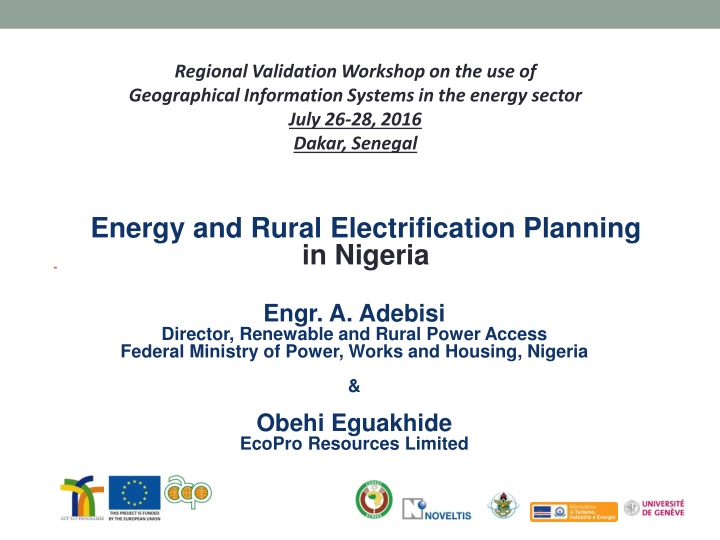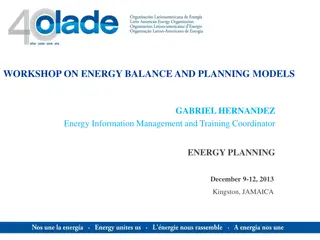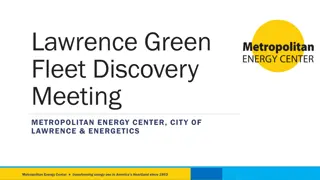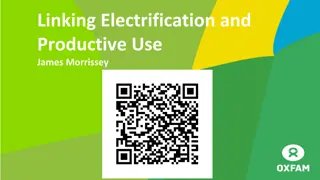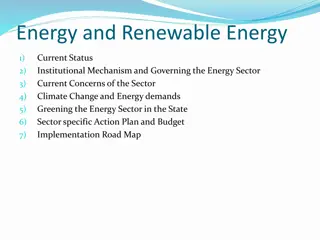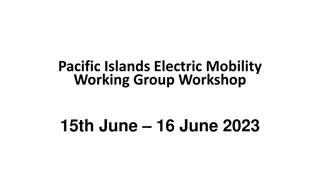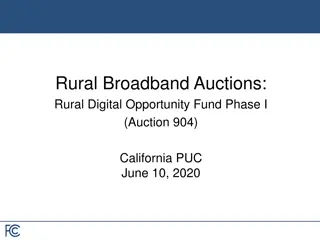Energy Sector Workshop and Rural Electrification Planning in Nigeria
Regional Validation Workshop held in Dakar, Senegal focused on the use of Geographical Information Systems in the energy sector, particularly rural electrification planning in Nigeria. The workshop highlighted Nigeria's SE4All targets, including increasing electricity access, modern energy usage, and renewable energy targets. It also discussed the geographical distribution of electrified communities in Nigeria and the power sector potentials in the country, emphasizing the status of electrification planning.
Download Presentation

Please find below an Image/Link to download the presentation.
The content on the website is provided AS IS for your information and personal use only. It may not be sold, licensed, or shared on other websites without obtaining consent from the author.If you encounter any issues during the download, it is possible that the publisher has removed the file from their server.
You are allowed to download the files provided on this website for personal or commercial use, subject to the condition that they are used lawfully. All files are the property of their respective owners.
The content on the website is provided AS IS for your information and personal use only. It may not be sold, licensed, or shared on other websites without obtaining consent from the author.
E N D
Presentation Transcript
Regional Validation Workshop on the use of Geographical Information Systems in the energy sector July 26-28, 2016 Dakar, Senegal Energy and Rural Electrification Planning in Nigeria Engr. A. Adebisi Director, Renewable and Rural Power Access Federal Ministry of Power, Works and Housing, Nigeria & Obehi Eguakhide EcoPro Resources Limited
Introduction High level validation of Action Plans of RE, EE &SE4ALL FMPWH in collaboration with EU/GIZ and working with REA is developing a rural electrification GIS mapping of the country
Nigerias SE4All Targets Energy Access Targets: To increase electricity access to 75% & 90% by 2020 & 2030 respectively; Access to modern energy for cooking of 53% & 78% in 2020 & 2030; Use of Butane Gas (LPG) or (CNG) of 15% & 25% by 2020 & 2030; Firewood consumption to reduce by 50% in 2020 Renewable Energy Targets: Renewable Energy mix of 38% and 31% by 2020 and 2030 respectively: hydro), 6% solar, 1% biomass and 3% wind by 2020 biomass and 4% wind by 2030 28% hydro (SM&L 20% hydro (SM&L hydro), 7% solar, 1% Energy Efficiency Targets: Overall, EE will increase by at least 20% by 2020 and 50% by 2030; 40% Efficient lighting by 2020 and almost 100% by 2030; 18
Electricity Access Projection 2030 Electricity Access 100 90% 90 75% 80 70 60 40% 50 40 30 20 10 0 2016 2020 2030 7 4
Geographical Distribution of Electrified Communities in Nigeria 9 Map showing electrified and un-electrified clusters
Nigerias Power Sector Potentials Federal Ministry of Power, works and housing. A recent study by GIZ/FMoP identified a total of 47,489 population clusters spread across the country and also established that out of the population of 193.4 million (NPC 2016) people, 174 million people lived within the clusters.
Planning - Status of Electrification In total 45,456 clusters are non-electrified (95 %) But only 83 out 181 million people living in the non- electrified area (46 %) Including 10m people living outside clusters assumed to be non- electrified The clusters with the largest number of people are all electrified 7
Energy and Rural Electrification Planning in (NAME OF THE COUNTRY) For more information, please contact Engr. A. Adebisi Director, Renewable and Rural Power Access Federal Ministry of Power, Works and Housing +2348075443121 yomibisi@yahoo.com & Engr. Faruk Y. Yusuf Assistant Director, Renewable and Rural Power Access Federal Ministry of Power, Works and Housing +2348038521476 fyyabo@gmail.com
